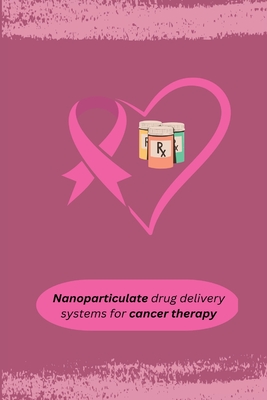You are here
Back to topNanoparticulate drug delivery systems for cancer therapy (Paperback)
Description
Molecular medicine has discovered many new therapeutic modalities by using state-of-
the-art techniques in molecular biology. High through-put, in-vitro assays that screen for pharmacological actions on the desired cell type are frequently used to design new drugs. Although such agents are certainly justified by their, success in-vitro, they frequently perform much less effectively in-vivo where the agent must reach its target cells in a tissue in sufficient quantities to be potent while sparing bystander organs. Depending on the route of administration, the endothelium and/or epithelium form significant barriers that greatly limit the in-vivo accessibility of many drugs, antibodies, and gene vectors to their intended target sites of pharmacological action, namely, the cells inside the tissue (Jain, R. K. et al., 1998). Hence, the major challenge for formulation development scientist is to design drug delivery strategies that deliver the therapeutic agents to the desired intracellular targets based on ability to understand, utilize, modify and exploit membrane trafficking pathways (Miller, N. et al., 1995).
Intracellular drug delivery refers to the delivery of therapeutic agents to specific compartments or organelles within the cell. The therapeutic agent could be a low molecular weight drug or a macromolecule like protein or DNA. Thus targeted intracellular drug delivery results in higher bioavailability of a therapeutic agent at its site of action (i.e. distinct intracellular compartments or microenvironments), potentiates the pharmacologic effect of the drug, and at the same time, reduces the side effects. (Jayanth Panyam et al, 2004). There are a number of pathways through which a therapeutic agent or a carrier can enter a cell. Such as Endocytosis, Caveolar endocytosis, Pinocytosis, Phagocytosis, In receptor-mediated endocytosis, Folate Receptor-Mediated Endocytosis, Transferrin Receptor-Mediated Endocytosis, Biotin Receptor-Mediated Endocytosis, Wheat Germ Agglutinin-Mediated Endocytosis, ICAM-1-Mediated Endocytosis, Antibody-Mediated Endocytosis, Physical or mechanical methods use force to traverse the cell membrane, e.g. Particle bombardment accelerates, Microinjection and Electroporation. The various Intracellular Targets are Endo-Lysosomal Targeting, Cytoplasmic Delivery, Nuclear Targeting, and Mitochondrial Targeting.
